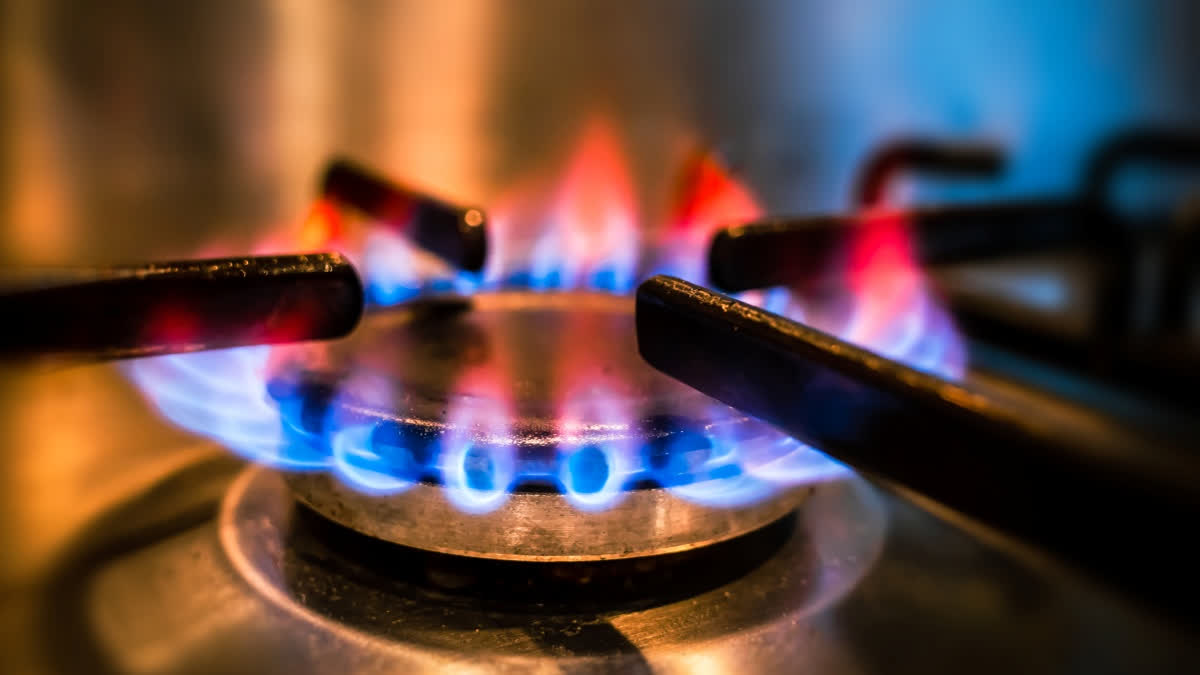For the last few days, the internet has been aflame over gas stoves – specifically, over whether they are harmful to human health. In fact, California lawmakers have passed a bill that would require a warning similar to those on tobacco products. By the end of September, the California state governor is likely to sign the bill into law. This means, the next time you buy a cooking stove in California, don’t be surprised if it shows a warning label..
Recently, Commissioner of the United States Consumer Products Safety Commission (CPSC) Richard Trumka Jr. made comments about the commission’s plans to potentially regulate gas stoves. “Products that can’t be made safe can be banned,” Trumka told a foreign media house. The statement from the CPSC was a result of a series of lawsuits filed against stove manufacturers claiming they should warn the customers about potential health risks. Now, gas cooking has been labeled as “a public health concern” by the American Public Health Association.
While this may be a hot topic of discussion in town, the issue is not new. Scientists have long known that gas stoves emit pollutants that irritate human airways and can cause or exacerbate respiratory issues. Environmental activists have been encouraging people to switch to electric stoves, and cut climate pollution.
Why gas stoves are harmful
Initial studies done between 1999-2004 by The Lancet Respiratory Medicine found no evidence of an association between the use of gas as a cooking fuel and either asthma symptoms or asthma diagnosis. However, in the last few years, several studies have concluded that gas cooking increases the risk of asthma in children. A 2023 Meta analysis estimated that one in eight cases of asthma in children are due to pollution from gas stoves. Some of the major emissions from gas stoves, including carbon monoxide, formaldehyde, benzene, and nitrogen dioxide, not only contribute to indoor pollution but also exacerbate respiratory illness, such as asthma or chronic obstructive pulmonary disease.
According to medical experts, the reddish-brown gas, nitrogen dioxide NO2, is the biggest concern and a key element of smog outdoors. This could irritate airways and contribute to asthma. Additionally, the methane and benzene released from gas stoves, even when they are off, are linked to cancer. Even if the gas stove manufacturers have developed cleaner and safer burners, they aren’t consumer friendly and are also not widely available to consumers.
A study done in 2023 revealed that cooking on a gas stove can emit significantly more harmful nanoparticles into the air, even when you compare them to the emission of gas-powered diesel vehicles. These emissions impact adults and children, potentially inhaling 10 to 100 times more nanocluster aerosols from indoor gas cooking compared to car exhaust fumes on a road.
In addition, gas stoves can lead to health risks within the home if there’s poor ventilation. A study done by Harvard revealed that the volatile organic chemicals that natural gas contains is more likely to leak into groundwater and migrate to drinking water supply wells. Another study that came after a few months of Harvard's research stated similar facts like those in the past – gas stoves are associated with higher risk of asthma in children Due to the small amounts of nitrogen dioxide and other pollutants which, if there's no proper ventilation, will hover in the home and can lead to severe asthma.
Although most of us may consider our exhaust fans to be effective in pushing those particles out of the home, according to a research by a Stanford University professor, these fans merely recycle air through a filter, which does not eliminate nitrogen oxide.
Are stove hoods safe?
The ultra-nanoparticles, measured about 1-3 nanometers in diameter, are invisible and small enough to bypass the body’s natural defenses and enter deep into the respiratory system and other organs. Thus, they increase the risk of developing asthma and other respiratory ailments. The research states that cooking on a gas stove can emit up to 10 quadrillion nanocluster aerosol particles per kilogram of cooking fuel, which is similar or even higher emission from vehicles with internal combustion engines. This includes any diesel or petrol run car or train, unless we go back to the 1700 century when steam engines were around.
Some studies in the past have also measured NO2 concentrations in various indoor settings. The results showed that people with asthma have more severe symptoms when they are exposed to higher levels of the gas. A study published by a public health researcher Dr Carl Shy noted that “families exposed to greater levels of the air pollutant nitrogen dioxide outdoors had higher rates of respiratory illness than families in less-polluted areas.” The researcher himself later informed health organizations that gas stoves produce nitrogen dioxide because of their high temperature and the range hoods can not clear the pollution.
Later, the gas industry argued that it is rather the opposite and said “range hoods could clear up this pollution.” According to an NPR study, with growing concerns of health effects from gas stoves, the gas industry started using a playbook similar to the one that tobacco companies used for decades.
Claims of tobacco-tactics used in gas stove
Several researches done in the United States show that gas companies back in the 1950s were employing people who had experience in the tobacco industry. Some of the researchers also stated that the American Gas Association was even hiring researchers who had previously accepted research funding from tobacco companies. Ralph Mitchell of Battelle Laboratories, who had conducted work for the tobacco industry, concluded that there were no health problems linked to use of a gas stove. Another research also reported that “no significant difference in reported respiratory illness between the members of households cooking with gas and those cooking with electricity.”
According to the NPR findings, all these years, the gas companies were funding the research related to the gas stove and its effects on health and climate. Their conclusion states that the findings were tempered since the researchers were highly funded. However, nearly 25 years later, the outdoor nitrogen dioxide standard was triggered in 2010, with the promise that it “will improve the air quality of millions.”
Since then, many independent scientists have continued to produce studies that state that children at home with a gas stove have increased risk of developing respiratory illness. It is after this research that the gas industry started pushing new tactics like those employed in the tobacco industry.
Can it be made safer?
When it comes to eliminating nitrogen dioxide, turning the fan on could fix the problem. However, the fans need to vent outside. Studies also suggest that turning the fan on while cooking can also reduce the risk of asthma as the particles of harmful gas would not remain in the house.
While the controversy and the research around the harmful effects of gas on humans are highlighted by many, another complicated issue is climate change. As of now, there are two opinions about how much harm gas stoves could have on the environment. Some argue that the amount of carbon dioxide (CO2) emission from gas stoves is relatively small compared to other sources, such as industrial processes and transportation. Others emphasize that every small thing helps curb the environmental harm, especially reducing carbon emission to mitigate the effects of climate change.
What is in store for India?
Back home in India, the gas stove market is estimated at 20 million units annually. As of March 2023, there were 31.36 crore active domestic LPG consumers in India. Adding to the number is Pradhan Mantri Ujjwala Yojana (PMUY) which has increased LPG coverage from 62% in 2016 to 104.1% in 2022. About 89% households in urban areas use LPG as their prime cooking fuel. Liquefied petroleum gas (LPG) is a fuel that's used for cooking, heating, and other industrial and automotive applications. LPG is a mixture of butane and propane, and is produced from natural gas and oil refining.
Recently, a study published in the journal Environmental Science & Technology also described the harmful gasses that gas stoves release, and how they are linked to respiratory ailments, cardiovascular issues, and cancer along with other health conditions. Another study published in the journal Nutrition and Cancer, highlighted the fact that high temperature cooking can produce carcinogens.
We spoke with a popular Mumbai-based consultant Oncologist, Dr Tirathram Kaushik at Wockhardt Hospitals about the correlation between high-temperature cooking and cancer. He said, “There is an association between high-temperature cooking and cancer. According to research, when cooking at high temperatures or open flame, people can be exposed to carcinogens such as heterocyclic amines (HCAs) and polycyclic aromatic hydrocarbons (PAHs) that alter the DNA and make one prone to cancer which is known to cause higher morbidity and mortality in the country. One can be at risk of cancer mainly while cooking deep-fried foods. Hence, one should take note that cooking meat, fish, and poultry at high temperatures can release heterocyclic amines (HCAs and polycyclic aromatic hydrocarbons (PAHs) which damage DNA, and cause various types of cancers in humans.”
“To avoid cancer, one should ensure proper ventilation so that the smoke is not inhaled. Moreover, spend less time cooking. Harmful compounds are released while cooking chapatis directly on a gas flame so be careful and exercise caution,” he warns.
No more conventional practices?
In India, ever since gas stoves became popular in the 1950s, their adoption faced challenges – competing with kerosene and coal stoves for resistance to smell and reluctance to change. Gas stoves didn’t become commercially popular in India until the 1980, when piped gas became available in cities and towns in India. However, villages across Rajasthan, Haryana, and Punjab continue to cook on woodfire, popularly known as ‘chulha’, while also owning gas stoves. When asked whether cooking on chulha is harmful, the doctor said, “Cooking on open chulha is dangerous for your health. It is a form of indoor pollution and not at all recommended for anyone. Cooking on a chulha tends to release smoke because of the burning wood, dung, and crop waste which can enter the respiratory system and cause wheezing, cough, suffocation, and breathlessness. One can also suffer from eye infections, headaches, and chest discomfort. Exposure for a long time to smoke from chulha can cause irreversible lung damage, triggered asthma, bronchitis, and chronic obstructive pulmonary disease (COPD). One may require lung transplantation for survival and improving the quality of life. So, stay alert!”
Apart from the Americans complaining against the gas stove agencies, in India, the issue came under notice after a study by National Library of Medicine highlighted that cooking chapati on direct flame can cause cancer. While the direct contact of any food with flame seems to be harmful, the conventional way of cooking rotis on tawa by pressing them with a kitchen towel was a much healthier practice. Dieticians say it prevented roti from coming under direct contact with the flame.
According to a report published by the Chief Scientist of Food Standards Australia and New Zealand (FSANZ) DR Paul Brent in 2011, “when the bread comes in direct contact with gas flames, it produces a chemical called acrylamide which is produced when sugar and certain amino acids are heated together during the cooking process.”
Is cooking ‘chapati on ‘tawa’ safe?
On being asked about her take on the chapati being cooked on direct flame, Celebrity Nutritionist Sneha Panchal said, “Cooking chapatis on a tawa (griddle) is generally recommended for better nutrition and safety. Directly cooking chapatis on a gas flame can cause uneven heating, which may lead to nutrient loss or even the formation of harmful compounds due to burning. Using a tawa allows for more controlled heat, preserving essential nutrients like fiber and vitamins while avoiding potential charring.”
Read more:



